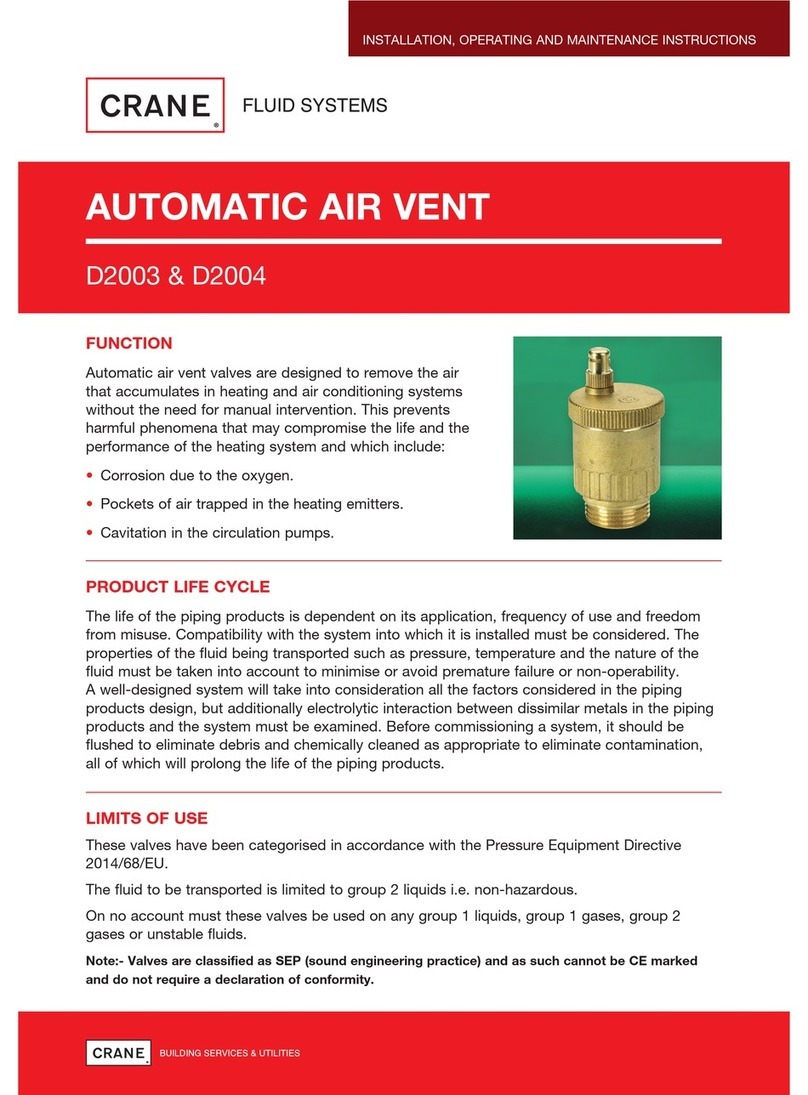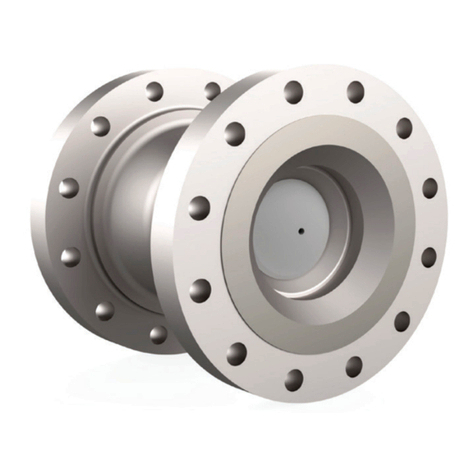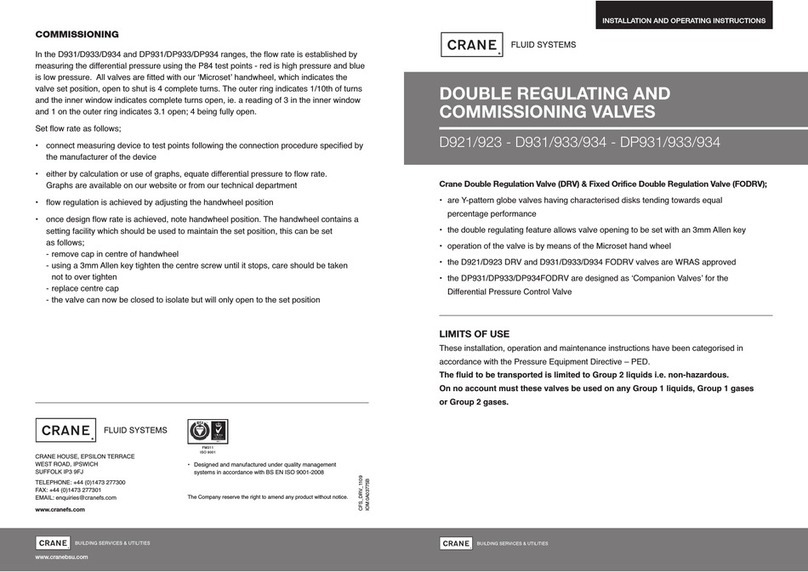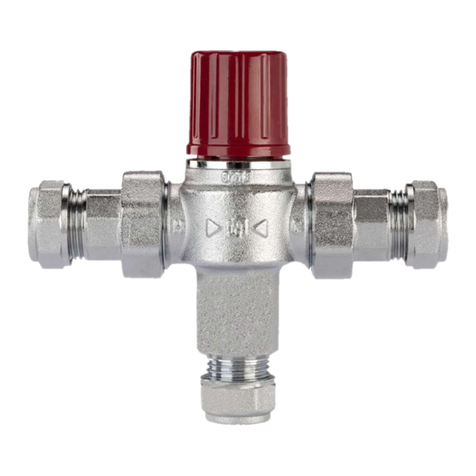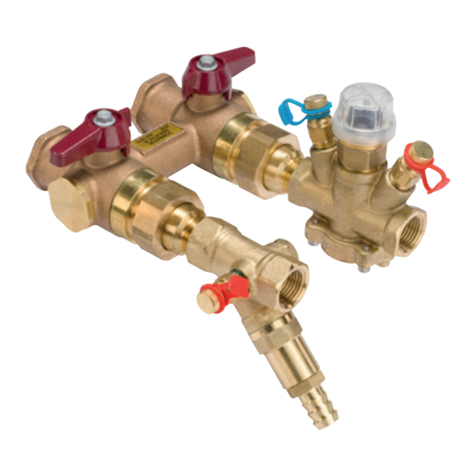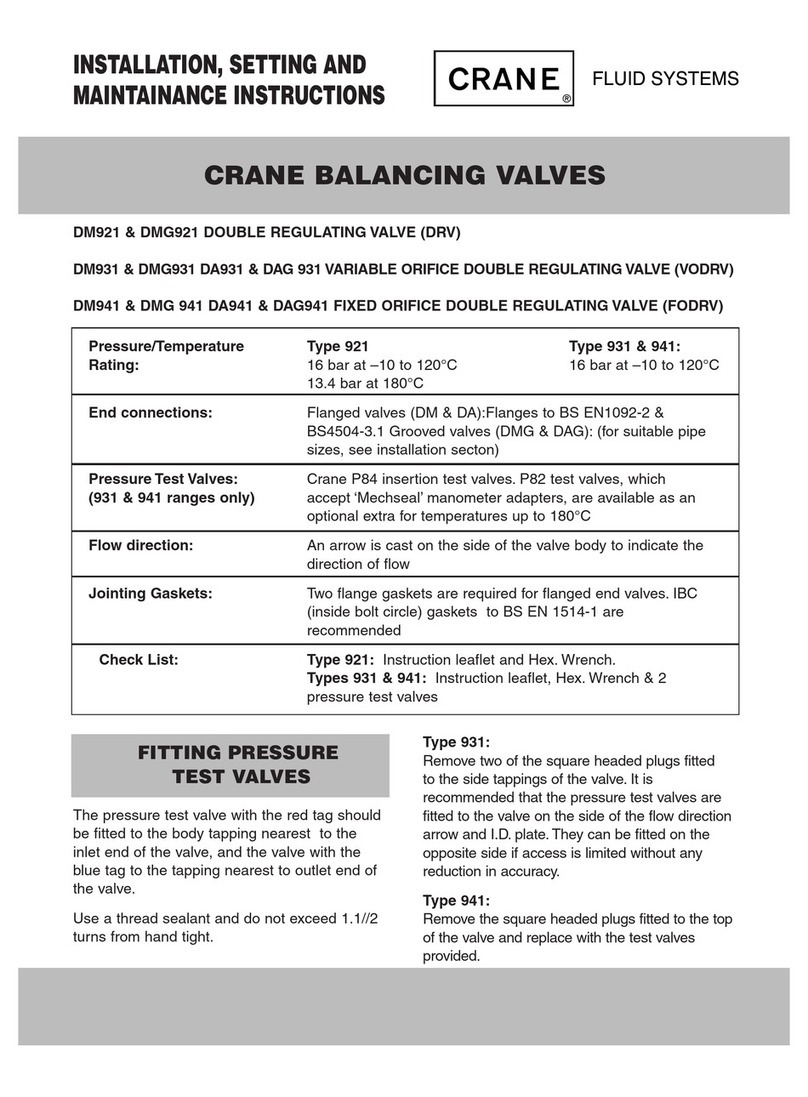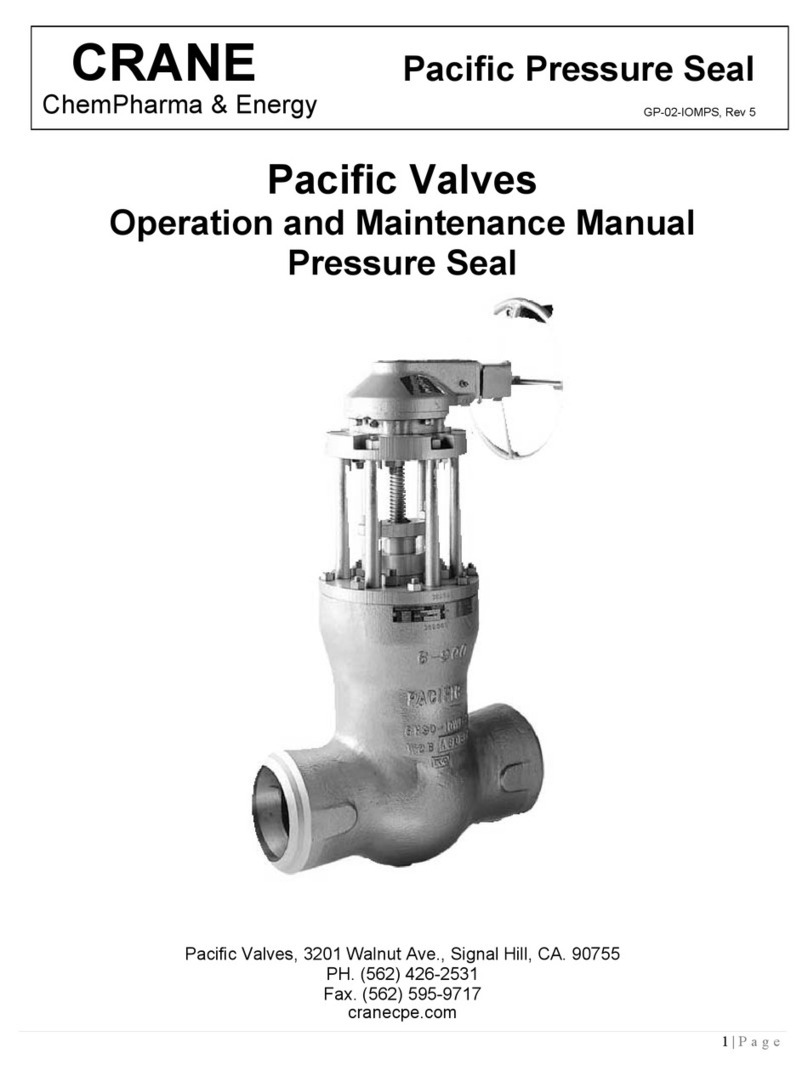
Read this Operations and Maintenance Manual before installing, removing, or repairing any Crane CRYOFLO
valves. Failure to do so may result in improper valve function, void of manufacturer’s warranty, bodily harm, or
fatal injury.
All CRYOFLO Valves are designed and manufactured to be installed in applications where no more than 1g of
force in excess of gravity is applied to the valve in any direction. This 1g force can be an effect of Traffic, Wind
or Earthquake. CRYOFLO Valves should not be used in applicationsthat exceed 1g.
When a CRYOFLO valve with an actuator is installed on a trailer/truck, the piping engineer shall ensure that the
actuator is supported properly.
All pip ing system components a re subject to certain levels of erosion and corrosion.As the valve wa l l thickness is the
g ov ern ing variable in ov era l l serv ice life, care should be taken to ensure tha t all valves and related piping components are
of asuitable wa l l thi ckn es s for th e giv en application.Periodic inspections should also be made as valves/components ma y
wear over time.As amin imum, annual inspection of valve b ody and bonnet wall should be performed with calibrated
measu ring devices such as micrometers and/or ultrasonic thickness gauges.Sev ere applications ma y require additional
inspection types and/or frequency.Additionally, valves should be inspected for g en eral signs of component wea r and/or
damage caused by p roc ess media.This may include the removal of insulation and/or jacketing to ensure aproper
inspection.All valves should also be cycled completely during these inspections to ensure proper operability.Care should
be taken to ensure that this will not affect the operating system.
All CRYOFLO valves are designed for operation in clean media. These media should be free of all debris and particulate
matter. Debris in the media may cause damage and/or reduced performance to the valve.
The style, size, pressure class and material selection of all valves is th e responsibility of th e piping system designer.
CRYOFLO Valves may offer sugg es ti on s in th is area, h owev er th e selection p roc es s is solely the responsibility of plant
designers.Plant designers should also take into account the sp ec ific effects that the p roc es s med ia will have on the valve
wall thickness and corresponding service life and ensure that the sel ec ted material is compatible with the p roc es s med ia .
See Table 1for wa l l thickness.It is also th e responsibility of the piping designer to ensure that va l ves are eq uipp ed wi th
any necessary venting.
Do not exceed 100% of the maximum pressure rating of the valve at any time during its operation. Pressure spikes
beyond the valve’s pressure rating are solely the responsibility of the user. Doing so may result in improper valve
function, void of manufacturer’s warranty, bodily harm, or fatal injury.
When operating any valve, operator shall keep safe distance from moving parts such as the stem.
All Handwheel operated CRYOFLO valves are designed for hand input. Do not apply excessive input torque via pipe
wrenches “cheater bars” or other devices can damage seat or other internal parts of valve.
Motor operated valves should be left in their factory set condition, unless the system operating parameters dictate a
change. If changes are necessary, they should be performed in small increments and then the valve operation inspected.
When adjusting these settings, use only the lightest/lowest setting possible to achieve the desired performance. Excess
torque and/or thrust in the motor settings may damage or lockup the valve.
Never remove a motor operator, gear operator or manual operating assembly from a valve while it is pressurized. The
valve must be completely relieved of all pressure prior to this disassembly.
Care should be taken to ensure that electrical motors are wired correctly to the power source. Incorrect phasing of
wiring may cause valve/motor damage.
1
www.cranecryof lo.com
WARNINGS
General Warnings & Information
Section A



